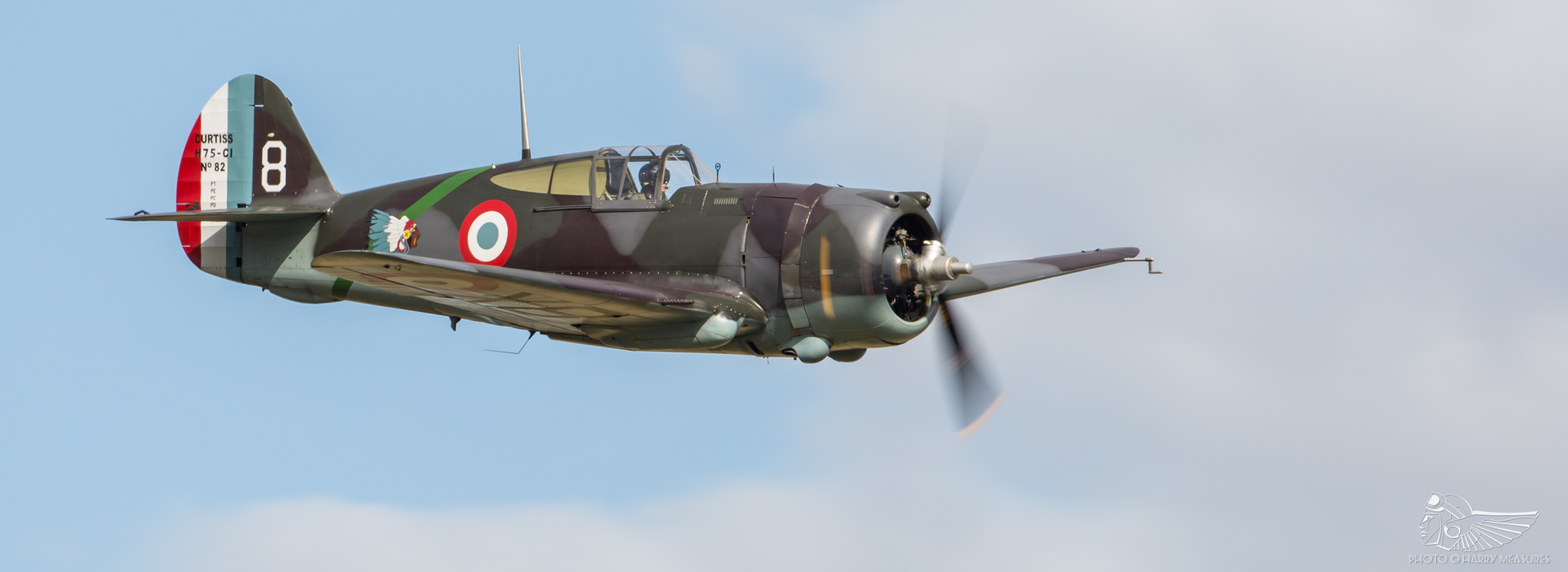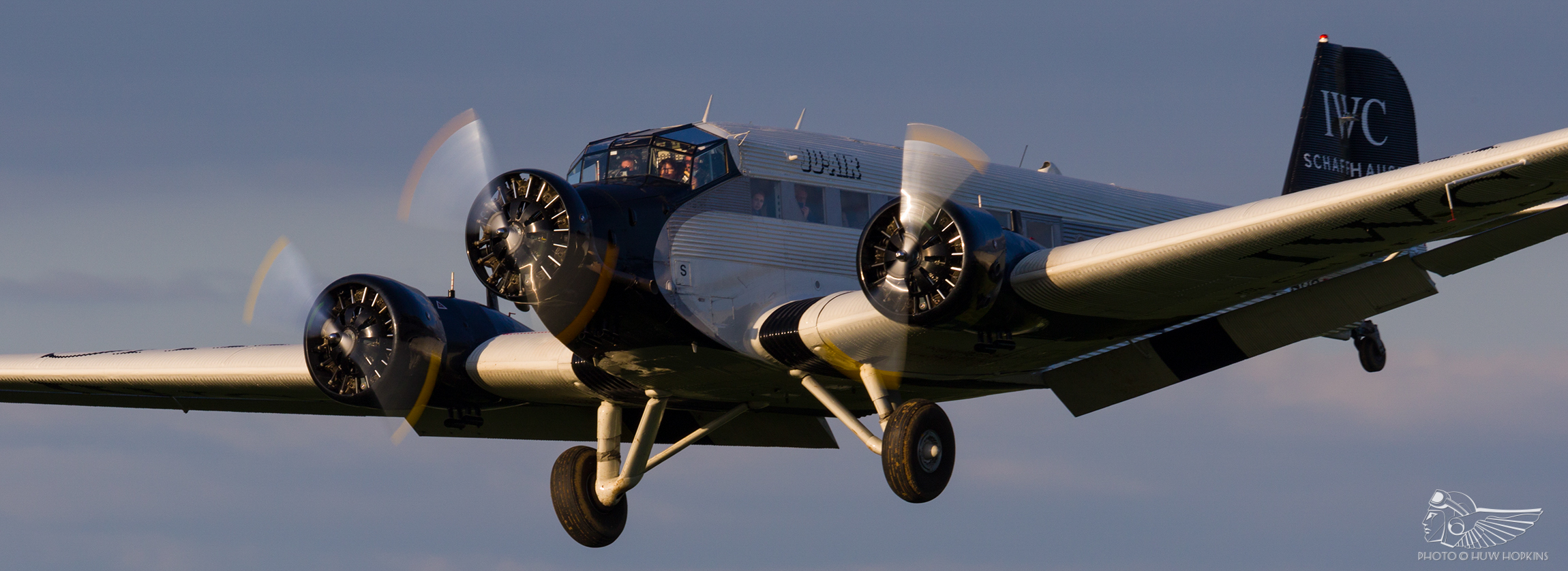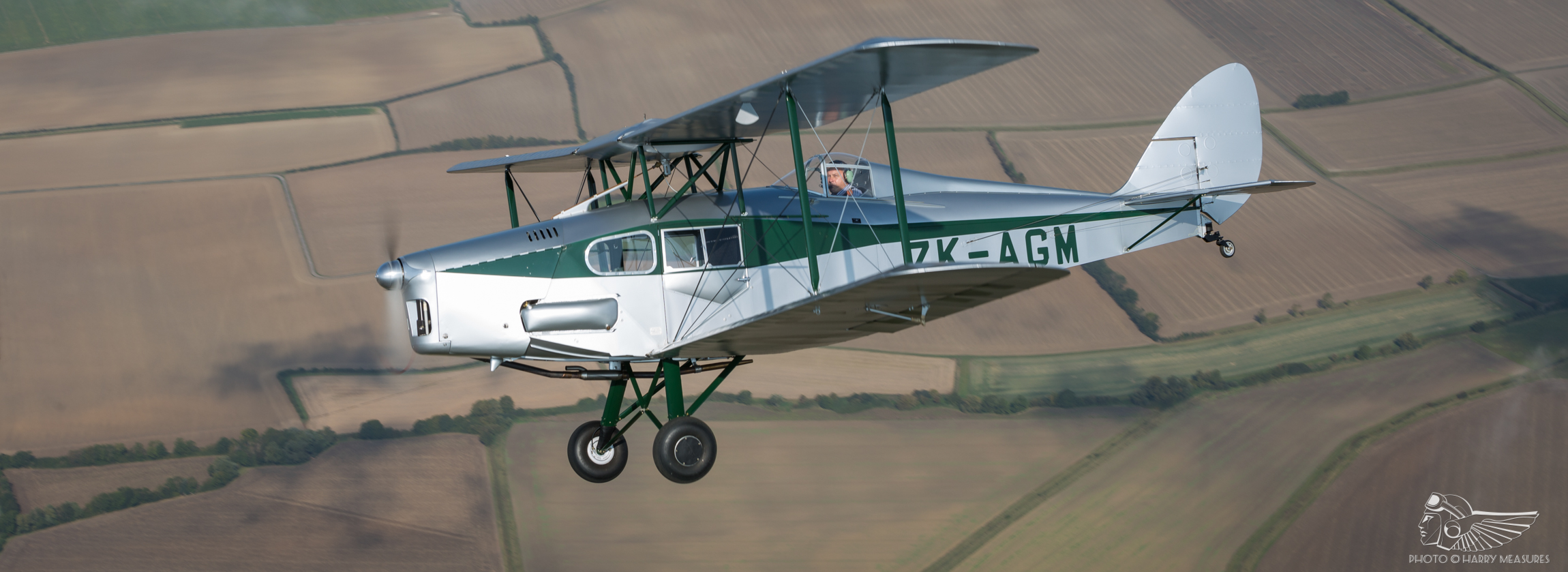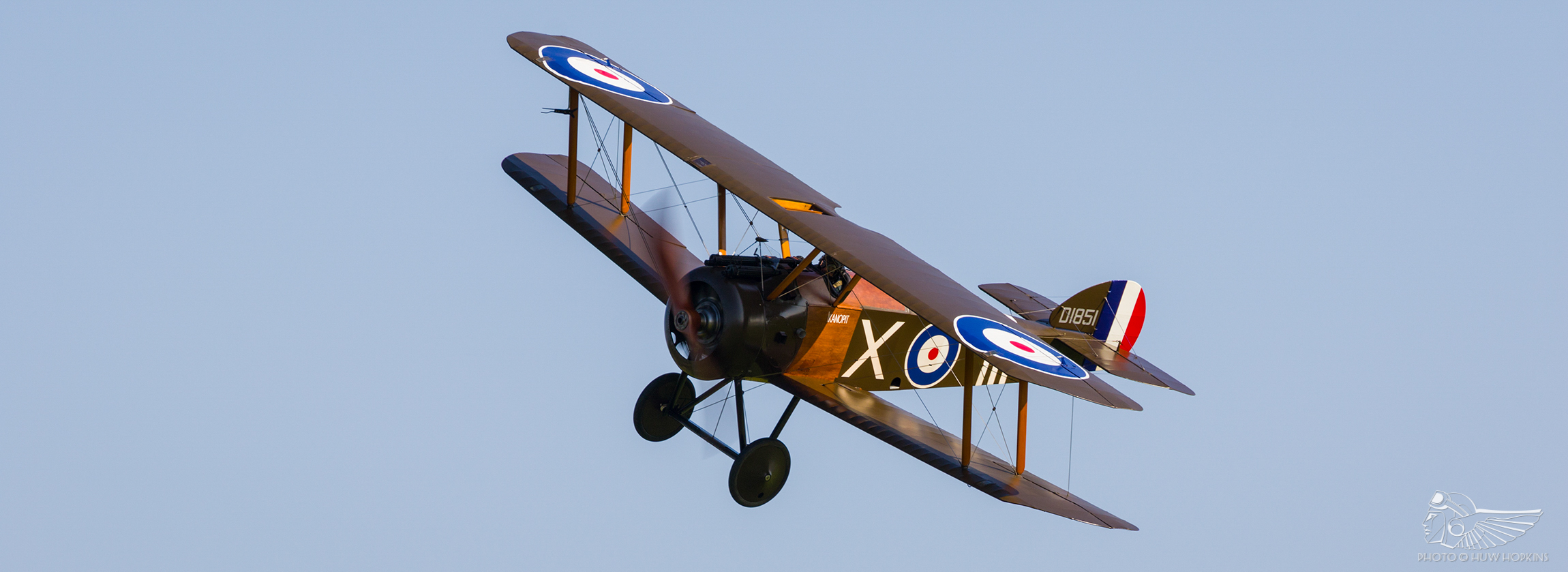As with any aeroplane, prior to displaying the Hawk 75 it’s worth taking some time considering three points; the aircraft’s characteristics, its performance and the site where the demonstration is to take place. There’s actually a fourth consideration – the weather – but that’s something you can’t do much about!
All the Curtiss Hawk family of aircraft exhibit some common characteristics, not surprising because the basic airframes are similar. Wing loading and aspect ratios are well proportioned to avoid any excesses of induced drag, control forces are reasonably harmonised and all the variants exhibit a good rate of roll. From a performance point of view, whilst the Hawk 75 has a marginally better power to weight ratio to that of a similar vintage later series of Mk.I Spitfire, its drag profile is far greater due to the air-cooled radial as opposed to the cowled Merlin. This is highlighted with each aircraft’s maximum speed – some 50 mph between the two of them: so energy management in the Hawk is likely to be more critical, requiring a recognition of how best to plan the flow of manoeuvres.
The noise from the Pratt and Whitney engine isn’t particularly distinctive, compared to the howl of a Harvard, the song of a Merlin or the powerful rumble of the bigger Pratt & Whitney motors, so staying as close to the spectators as possible is another desirable factor.
From the site point of view, there’s patently a significant difference between displaying at somewhere like Fairford as opposed to Old Warden. So once again, a basic idea of the flow of manoeuvres needs to be established in order to give both extremes of the crowd line something to look at, preferably up close and personal.
For these reasons I’ve never been one to advocate fixed display sequences. Far better to have a catalogue of manoeuvres available, with known entry speeds that satisfy the energy management criteria, and pick the appropriate ones as the display progresses. You obviously need to have a rough running order, but retaining flexibility has served me well over the last 40 years.
But given that some sites are more familiar than others, it’s easy to fall into some sort of routine. Duxford is a prime example, and with the peculiarities of the site it lends itself to a similarity of display, regardless of aircraft type. The display centreline is displaced a couple of hundred metres to the west of the control tower, and at the eastern end of the airfield Duxford village is a no fly zone, as is the M11 below 200 feet. So if you want to keep the display in front of the spectators, and try to avoid ending up having to reverse direction out of sight behind them (especially at the eastern end), then use needs to be made of the 45 and 90 degree axes from the main display line.
What follows is a description of the display I flew in the Hawk 75 at Duxford in September 2014. The weather was good, so no restrictions in terms of available manoeuvres. The only minor hitch was the requirement for a formation arrival prior to starting the solo display, so there was going to be a bit of a deficit in the initial head of steam; vertical rolls therefore off the menu!
The cockpit of the Hawk 75 is pretty spacious – one could reasonably assume it was designed for a gorilla! So correct seating position is essential, both in terms of full control availability and having all the various selectors and switches to hand. One pilot found it difficult to reach the fuel selector, having strapped himself securely in, and slightly embarrassed when the engine faltered due to a low tank quantity half way through his display. It’s the simple things that can catch you out!
Anyway, the starting sequence is relatively simple. Having turned the propeller by hand to clear any oil build up in the lower cylinders during the pre-flight (essential on any radial engine, a hydraulic lock is guaranteed to shear a starter drive) the electric fuel primer is activated for three short bursts. The starter is then engaged and the magnetos simultaneously switched on, and with luck the engine fires up whereupon the mixture lever is moved smartly to auto rich. It’s then a matter of waiting for around five minutes with the engine ticking over below 1,000 rpm to get some warmth into the oil and flowing more readily around the engine. It’s not uncommon to see oil pressures in excess of 100 psi on P and W radials on start up, and any increase in rpm and therefore oil pressure is likely to cause multiple oil seal failures with the engine.
Taxying is straightforward, the brakes are effective and visibility good compared to some fighters of the same era. Variable pitch propeller operation is checked at around 1,600 rpm; both the elevators and brakes more than man enough to cope with the job, that is maintaining position and holding the tail on the ground. Take-off is another civilised affair, providing the power is applied sensibly, as with all tailwheel aeroplanes.
Having spent five minutes hanging around to the north of the airfield and gaining some height (and therefore energy), the moment arrives to commence the run in. With Alan Wade hanging onto my wingtip in TFC’s P-40F, we run down the crowd line from east to west in a gentle right bank to give the photographers a better profile. The engine and propeller combination works well; there is no tendency for the engine to overboost itself as airspeed increases (thereby requiring constant monitoring of the manifold pressure gauge and throttle adjustments) and the propeller retains its required rpm.
We level off at the western end, and with around 240 mph on the clock I pull up into a half Cuban, although with sufficient extra energy to execute an extra roll on the way down. The Hawk has a good rate of roll to allow this manoeuvre to be completed safely, the only proviso is to start the roll as soon as the horizon appears at the top of the half loop and avoid allowing the downhill line to steepen – definitely no more than 30 degrees. This keeps the aeroplane either pitching or rolling as much as possible in front of the spectators, and brings the aircraft back towards crowd centre ready for the next figure.
With much of the energy recouped during the rolling descent, there’s now plenty of speed to pull up on crowd centre into a loop, exiting on the B axis (that is, 90 degrees to the display line). Thus the aircraft is presented in a different profile to the spectators, and early compensation can be made to any on or off crowd wind that can cause problems in holding the required lateral display line. Then up into another half Cuban, using a maximum of 4g on the pull up but easing off in the vertical to reduce the induced drag and regain as much height (and therefore energy) as possible.
At this point it’s probably worth mentioning that aerobatics that are flown in airshows are generally subtly different from what you would see at an aerobatic competition. Any looping manoeuvres are unlikely to be perfectly round, but more egg shaped – once again to contain the all important energy management issue. Similarly, rolls are conducted on an upward vector, at least to the point where the roll can be safely completed before the ground becomes an issue. There are obviously exceptions – a display by a competition aerobatic pilot is likely to concentrate on accurate shapes, and the smoking trails of the well-known aerobatic teams need to be accurately drawn.
So we’re now running in towards the crowd, so the turn is kept going in order to exit at an angle of 45 degrees away from the display line, and then straight up and into another half Cuban. The same principle of regaining as much height / energy at this point once again applies, in order to set up for a final loop inbound to the display axis at 45 degrees. With around 230 mph on the clock, the Hawk is eased up into the egg-shaped loop and a subtle bit of roll applied on the way down to bring us tracking down the display line.
A quick check on the timing indicates three minutes gone (about right, each looping manoeuvre should take around 30 seconds start to finish at these speeds). In order to remain inside the M11 we roll into a moderately tight bank until running south and parallel with the motorway, and with 220 mph on the clock pull up for another half Cuban to bring us back towards the display line.
Note that the speed is starting to decay – only 220 mph on the last pull up as the energy is gradually being lost. Pitching manoeuvres can still be flown safely, but full blown loops are no longer an option. So the next manoeuvre is another loop, but flown crowd centre on a 45 degree sloping plain – in other words a sort of glorified wingover – but useful for presenting the aeroplane in a continually changing aspect for the photographers and spectators alike. Then exit on the 45 line away from the crowd before reversing the turn and pulling up into a wingover; thus setting up for a final climbing roll down the crowd line and exiting north and making way for the P-40.
So four and a half minutes of fairly intense flying, the aircraft presented in multiple aspects with plenty of movement and noise, and staying in front of the spectators at all times – job done! I hope you enjoyed reading about the display as much as I did flying it, and we all need to remember that if it wasn’t for Stephen and Nicky Grey at the Fighter Collection, as well as their engineers who keep these machines airworthy, living relics such as the Hawk 75 would be consigned to the history books.
![]()
In memory of Alan Wade.














